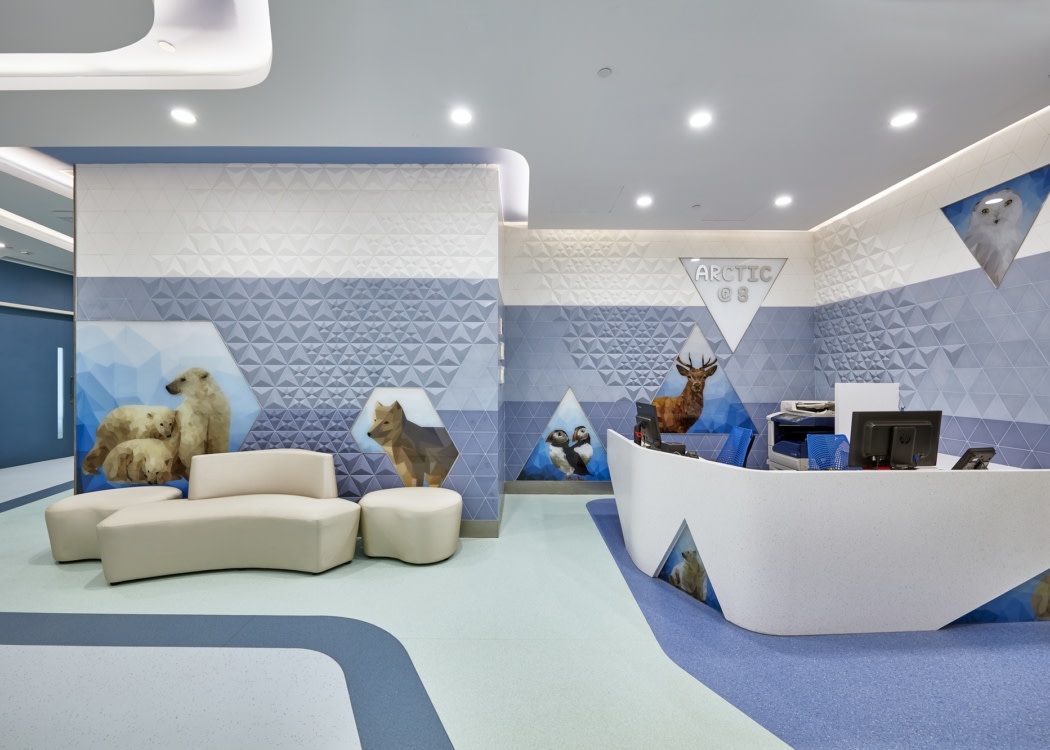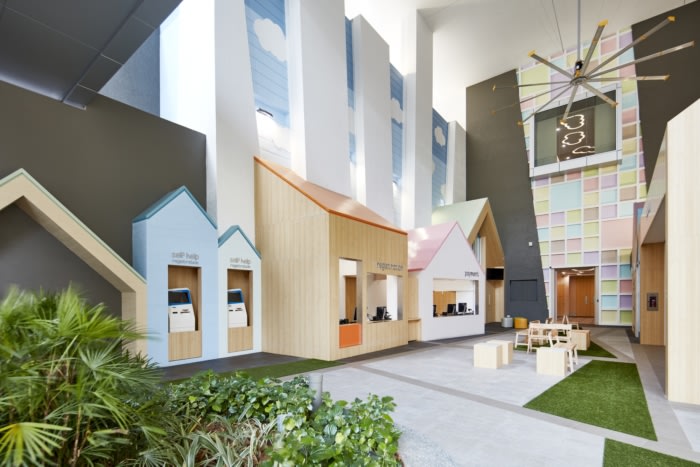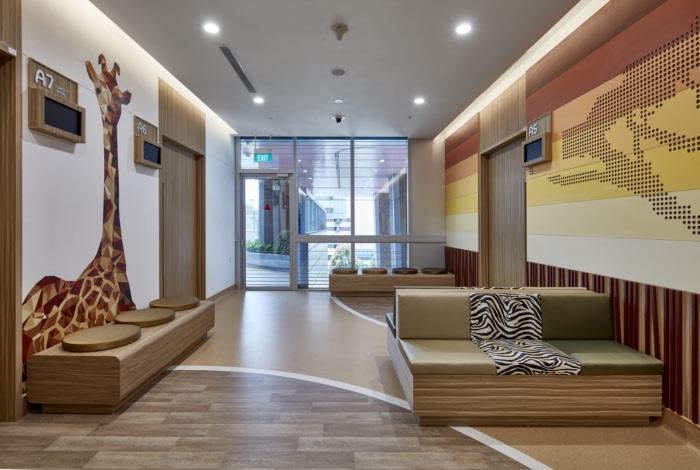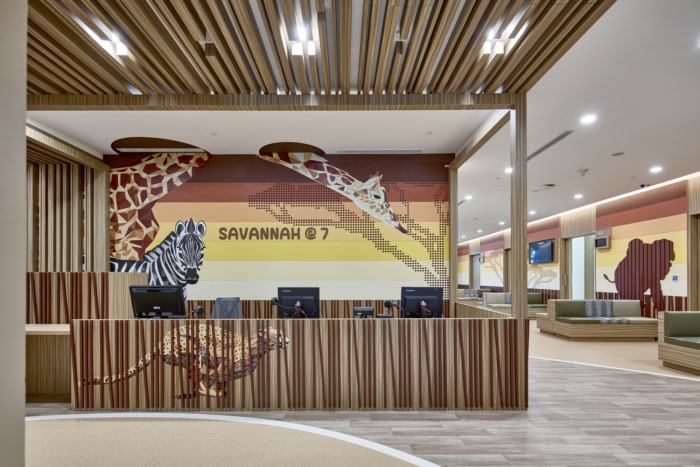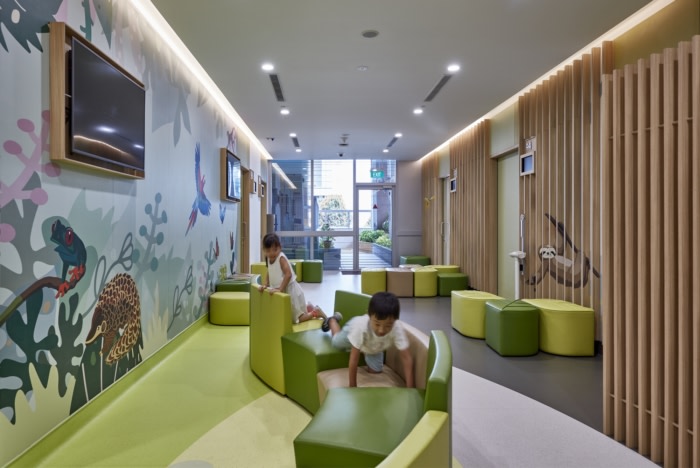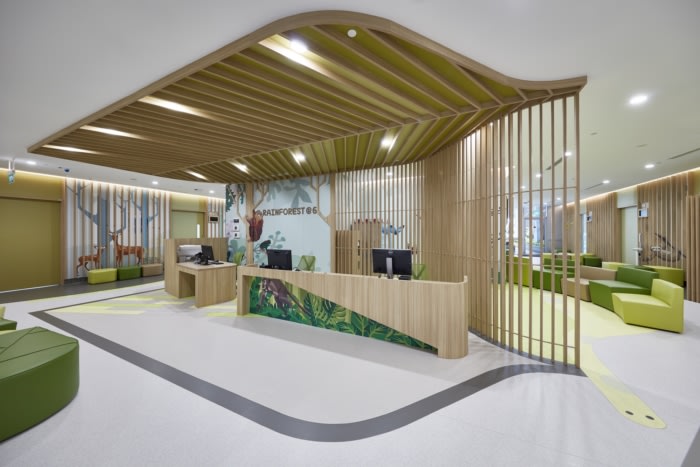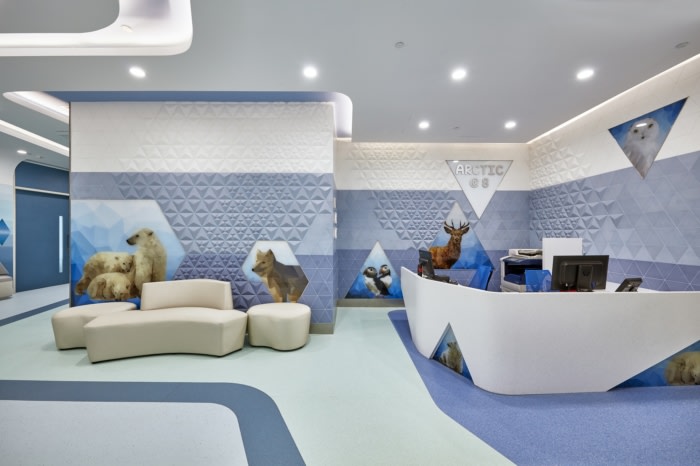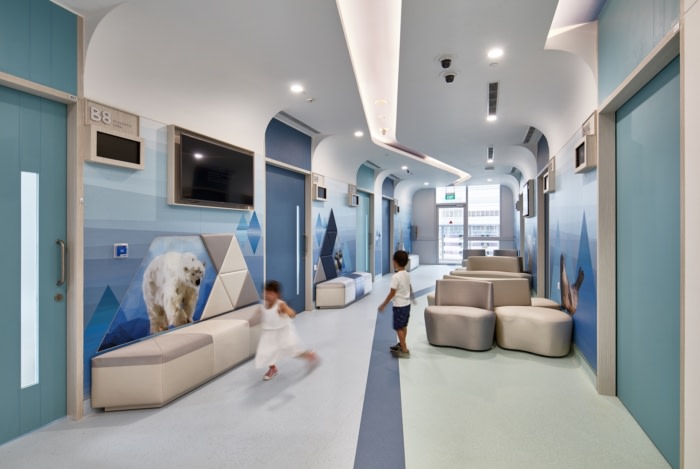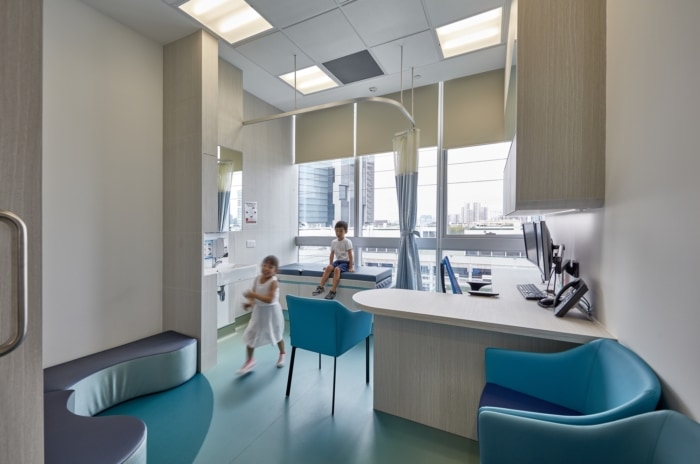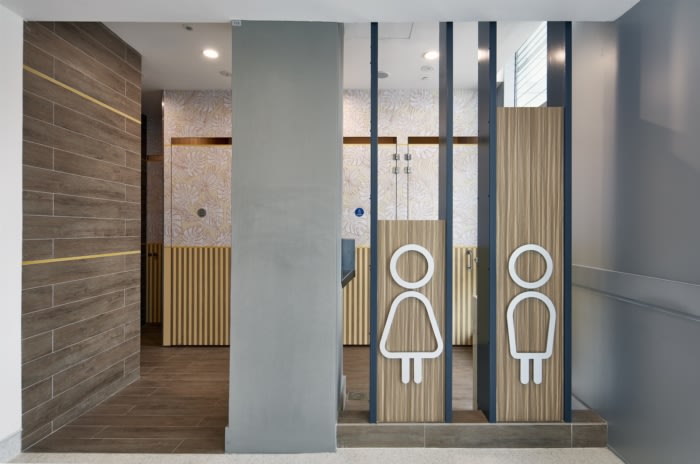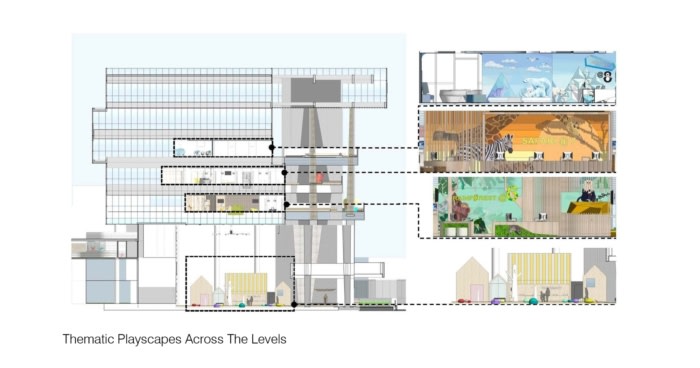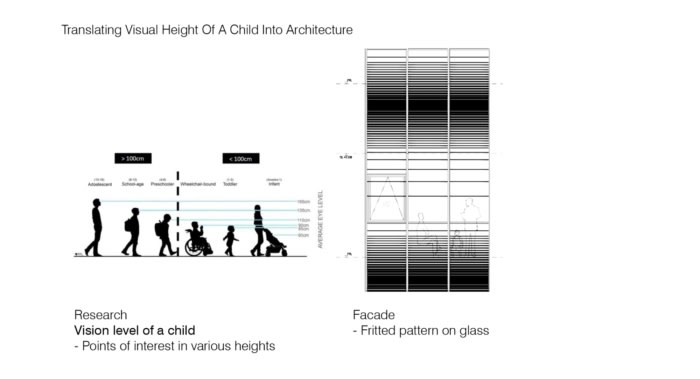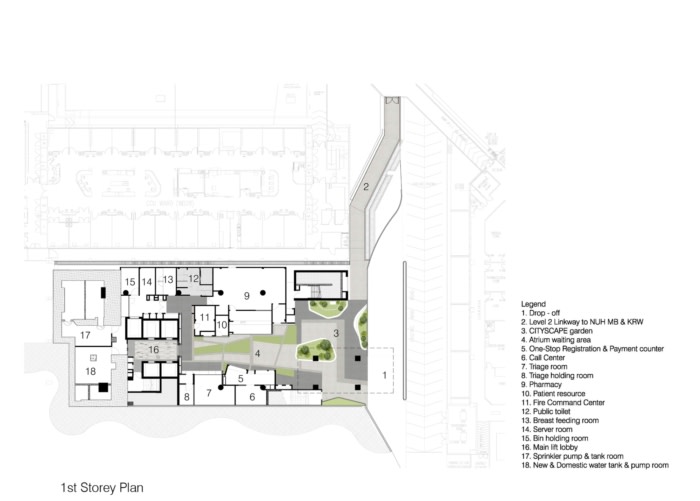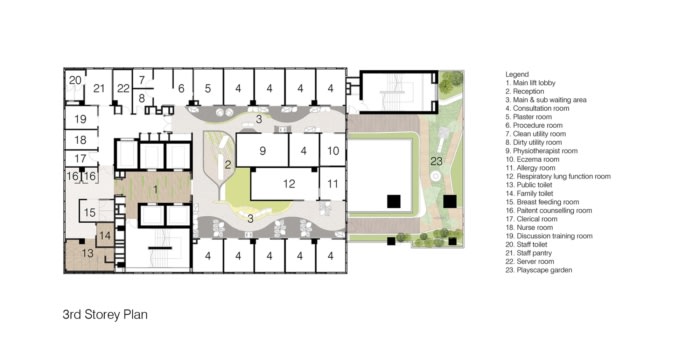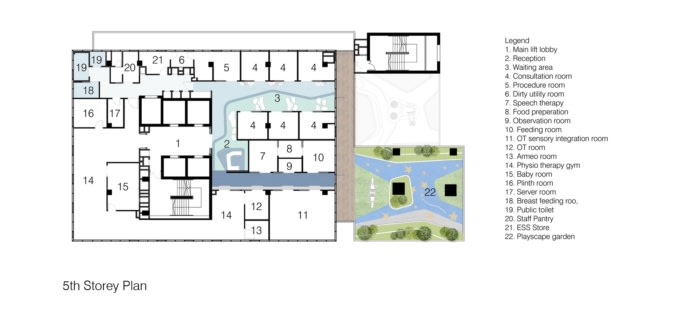Khoo Teck Puat – National University Children’s Medical Institute
Forum Architects consolidated pediatrics care under one roof in the realization of Khoo Teck Puat’s National University Children’s Medical Institute located in Singapore.
The new five-storey building fits in a tight 3-sided courtyard and rises above the neighbouring buildings. The massing is lifted off the ground to create a voluminous atrium that also serves as a one-stop arrival. The lifting promotes passive cooling to the naturally ventilated atrium and provides relief to the adjacent children wards. The exterior is kept simple with fritted glass on the curtain wall to keep out solar heat gain and control glare while maintaining views out to the surroundings.
A series of staggered sky gardens is introduced to break up the massing on the front and double up as playground and social spaces. The external playground is shaded and located adjacent to the consultation rooms. They allow children to play while waiting. It also provides a green relief within the highly densed National University Hospital (NUH) compound.
To make a hospital visit as comfortable and stress-free as possible, a therapeutic environment based on the concept of a ‘Managed Playscape’ was explored. Studies have shown that through good play, a child’s body, mind and soul are stimulated, encouraging sociable interaction and creative development.
The ‘Managed Playscape’ is inspired by natural landscapes. Each level of the building is centred around different themes – CITYSCAPE, PARK LINK, RAINFOREST, SAVANNAH, ARCTIC – to create a series of stimulating journeys for the child and family.
The lofty entrance atrium features CITYSCAPE with a street playground and pastel townhouses. The scaled down streetscape makes the tall atrium less intimidating. The scale relates to a toddler’s and children’s height ranging from 60-165cm.
In RAINFOREST, the ‘hide-and-seek’ illustrations of jungle flora and fauna is depicted in the opposing faces of the vertical slats. These create visual intrigue and encourage exploration through touch and movement. Modular furniture encourages children to climb, interact and explore the environment.
Playpen was designed to have the doctor approach the child during play rather than the child ‘visiting’ the doctor which is the traditional consultation mode. This shift in perspective results in the child feeling ‘at home’. We arrived at this arrangement through months of consultation with doctors as well as doing actual testing using mock-up room and recording feedback.
Design: Forum Architects
Design Team: Tan Kok Hiang, Ho Sweet Woon, Nicole Chee, Cheryl Chan, Kulap Loetmanlikaphorn
Photography: Aaron Pocock

